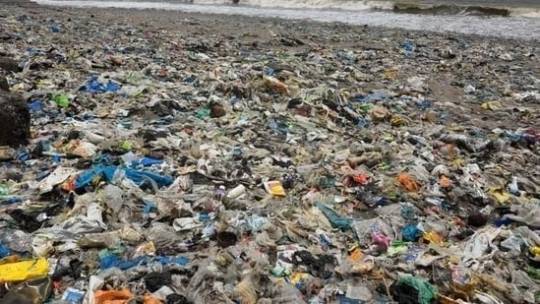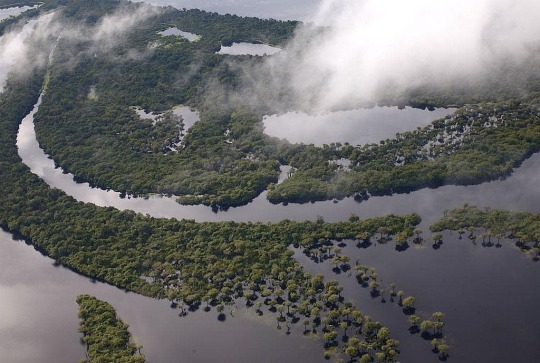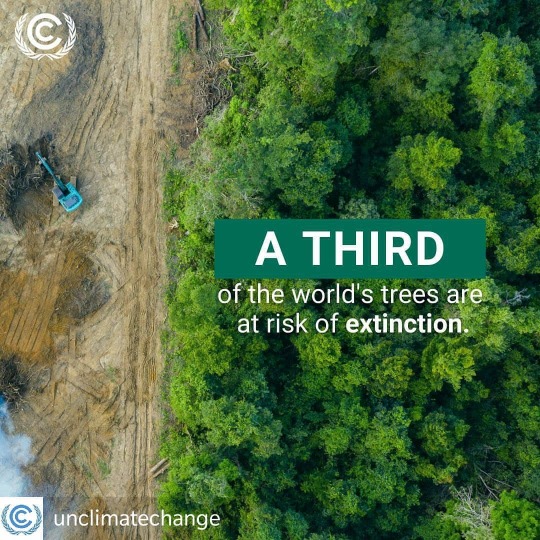Video
Reposted from @rewild The world got a little wilder on the first day of 2022 when the mighty Jaguar Jatobazinho took his first steps into Iberá National Park, three years after his dramatic rescue in the Brazilian Pantanal, where he was found weak and starving on the banks of the Paraquay River in 2018. “The plight of Jatobazinho echoes the dilemma of many species today which have been displaced by the encroachment of human settlements, agriculture, poaching and other threats, and struggle to find suitable conditions to hunt and mate,” says Sebastián Di Martino, Conservation Director of @rewilding_argentina. Jatobazinho is the first adult male Jaguar to walk the wetlands of Iberá in 70 years. He joins three adult females, two of which he mated with when they were onsite together at Rewilding Argentina’s Jaguar Reintroduction Center, and the four cubs that he fathered before their release in 2021. The effort to rewild Jaguars in this part of the world is 10 years in the making; a venture shared by Rewilding Argentina, Re:wild and @tompkins_conservation. #TheEnvironmentalBoy #wildconservation #jaguar #2022 #brazil #saveenvironment #savetheearth https://www.instagram.com/p/CYk809cBDuS/?utm_medium=tumblr
0 notes
Photo

Just when we assumed Covid-19 was under control, Omicron popped up globally. Just when we were told Omicron might be mild, the Florona combination emerged. While we collectively battle the Covid family, we must also battle the endless plastics from this pandemic. That Covid has resulted in significant amounts of plastic waste is not new. What has changed, however, is that protective gear is part of our normal lives now. Initially, masks, gowns, and gloves, made of woven plastic, were intended to be single-use. Nobody then adequately understood transmission, and fears were that Covid might spread by touching a contaminated surface. Now that we know better, the shift to re-usable, environmentally benign items is essential. How can this be done? First, states must identify technologies, materials and design that is greener. This can be done via a challenge or a call. In fact, manufacturing these can provide jobs in the investing state as well as the export income. Second, government procurement can play a key role by creating market linkages, increasing confidence in the new products. And finally, some sectors, such as small, private healthcare institutions and manufacturers of single-use items may need subsidies and funding to frog leap into buying and manufacturing green products. We are all exhausted by this endless pandemic. It may or may not end this year. Instead of passively praying for its end, let us shift to greener ways to protect the world from this virus. This will also protect us from intense pollution. Pc - (Satish Bate/HT Photo) Source - Hindustan Times #TheEnvironmentalBoy #COVID19 #omicron #plasticban #plastic #2022 #pandemic #greenproducts #healthcare #florona #environmentalist #environmentalawareness #climateactivist #climatechangeisreal #climatechange https://www.instagram.com/p/CYRHj64PbGJ/?utm_medium=tumblr
#theenvironmentalboy#covid19#omicron#plasticban#plastic#2022#pandemic#greenproducts#healthcare#florona#environmentalist#environmentalawareness#climateactivist#climatechangeisreal#climatechange
0 notes
Photo

Reposted from @rhinosirf “It is critical that we turn this outrage into action to reverse these worrisome trends as quickly as possible to save South Africa’s rhinos.” In the last 2 weeks, 24 rhinos have been killed across several South African parks and reserves. This species will not survive poaching at this pace. Click the link in bio for more. #TheEnvironmentalBoy #rhino #southafrica https://www.instagram.com/p/CXv8sKzv_dy/?utm_medium=tumblr
0 notes
Photo

Reposted from @bbcnews Severe drought lead to the deaths of these six giraffes in Sabuli Wildlife Conservancy in Wajir, Kenya. The animals, already weakened from a lack of food and water, died after getting stuck in mud as they tried to drink from a rapidly drying reservoir. Their bodies were moved after death, to avoid contamination of the water. The dry conditions in Kenya are so severe that wild animals are dying in their hundreds and farmers are reporting losses of up to 70% of their livestock. Tap the link in our bio to see how drought conditions in the Horn of Africa are predicted to persist until at least mid-2022, putting many lives at risk. (📷 Getty) #Kenya #BBCNews #TheEnvironmentalBoy #drought #africa #giraffes #kenya #sabuliwildlife https://www.instagram.com/p/CXdHqUXPkNX/?utm_medium=tumblr
0 notes
Video
Reposted from @anujramatri This man cleans the river every every morning but through this video he wants to give a very important message as well. See this video to know more. #TheEnvironmentalBoy #river #pollution #waterpollution #akshaypatil #repost #share #inspire #climateactivist #climatechangeisreal #climatejustice #rivercelaning #indianenvironment #india #change https://www.instagram.com/p/CXN0Kr2Fehu/?utm_medium=tumblr
#theenvironmentalboy#river#pollution#waterpollution#akshaypatil#repost#share#inspire#climateactivist#climatechangeisreal#climatejustice#rivercelaning#indianenvironment#india#change
0 notes
Photo

Reposted from @yaleenvironment360 Armadillos are pushing northward as temperatures rise. Scientists believe that climate change has expanded their range by producing milder winters, allowing them to comfortably inhabit new areas, including, most recently, parts of the Blue Ridge Mountains in North Carolina. Armadillos originated in South America, and have long been common in Texas, where they are the state’s official small mammal. Now, they are reaching as far north as Missouri, Nebraska, and Iowa, with little to halt their advance. Able to hold their breath for six minutes at a time, armadillos can cross rivers by walking along the bottom or by inflating their intestines and floating across the top. Their hard shell protects them from predators, and they reproduce prolifically, with females giving birth to quadruplets multiple times over the course of their lives. #TheEnvironmentalBoy #southamerica #armadillo #armadillolizard #northcarolina #climatechange Photo Credit: National Park Service https://www.instagram.com/p/CW2YGEHNBVF/?utm_medium=tumblr
0 notes
Video
Reposted from @leonardodicaprio CONTENT WARNING: POLICE VIOLENCE “The Wet’suwet’en people, under the governance of their hereditary Chiefs, are standing in the way of the largest fracking project in Canadian history. Our medicines, our berries, our food, our animals, our water, our culture, our homes are all here since time immemorial. We will never abandon our children to live in a world with no clean water. We uphold our ancestral responsibilities. There will be no pipelines on Wet’suwet’en territory.” –Sleydo’, Gidimt’en Checkpoint Spokesperson, before her arrest on November 19 After setting up a blockade to protect their land, community, and sacred headwaters Wedzin Kwa from Coastal GasLink’s planned fracked gas pipeline, the Wet’suwet’en Nation has faced militarized raids from the Royal Canadian Mounted Police. This past weekend, the RCMP, escorting Coast GasLink workers and equipment, violently arrested unarmed Indigenous land defenders and journalists and refused access to the territory to Chief Woos, other Wet’suwet’en supporters, allies, or media. Take Action: Issue a solidarity statement from your organization or group. Host a solidarity rally or action in your area. Pressure the government, banks, and investors. http://yintahaccess.com/take-action-1 Donate. http://go.rallyup.com/wetsuwetenstrong Spread the word. #WetsuwetenStrong #AllOutForWedzinKwa #ShutDownCanada #FreeSleydo #TheEnvironmentalBoy #Wetsuweten More information and developing stories: Website: Yintahaccess.com IG: @yintah_access Twitter: @Gidimten Facebook: @wetsuwetenstrong Youtube: Gidimten Access Point TikTok: GidimtenCheckpoint Video from @yintah_access https://www.instagram.com/p/CWmveW3F5Vj/?utm_medium=tumblr
0 notes
Photo

Reposted from @leonardodicaprio Protecting 30 percent of the planet in the most important places for biodiversity and climate by 2030 will require greater ambition, innovation and collaboration among governments, companies, civil society, and Indigenous and local communities. The new statement issued at #COP26 last week on advancing support for Indigenous peoples and local communities' tenure rights and forest guardianship is a step in the right direction. "This public-private joint commitment is an important step toward increasing support for the self-determined priorities of Indigenous peoples and local communities, and to securing or strengthening their customary tenure rights, as guardians of some of the world's most intact and thriving forests," says the response from the Protecting Our Planet Challenge, which includes @rewild. #TheEnvironmentalBoy #leonardodicaprio #climateactivist #climatechangeisreal #climatechangegreen #gobalclimatestrike #gogreen #COP26 #earth #ozonelayer #ozone #ozonehole #trees #treesplantation #treestreestrees #planttrees https://www.instagram.com/p/CWRAe00s1_b/?utm_medium=tumblr
#cop26#theenvironmentalboy#leonardodicaprio#climateactivist#climatechangeisreal#climatechangegreen#gobalclimatestrike#gogreen#earth#ozonelayer#ozone#ozonehole#trees#treesplantation#treestreestrees#planttrees
0 notes
Photo

Reposted from @environmentalworkinggroup A new #EWG analysis found farmers near military bases may be unknowingly using water contaminated by the “forever chemicals” known as #PFAS. Learn how this can pose a threat to the U.S. #FoodSupply at the link in our bio. . #EnvironmentalWorkingGroup #Farmers #ForeverChemicals #MilitaryBase #TheEnvironmentalBoy https://www.instagram.com/p/CV-DJmlv855/?utm_medium=tumblr
#ewg#pfas#foodsupply#environmentalworkinggroup#farmers#foreverchemicals#militarybase#theenvironmentalboy
0 notes
Photo

Air pollution is likely to have been responsible for up to 6 million premature births and 3 million underweight babies worldwide every year, research shows. The analysis, which combines the results of multiple scientific studies, is the first to calculate the total global burden of outdoor and indoor air pollution combined. Indoor pollution, mostly from cooking stoves burning solid fuel such as coal or wood, made up almost two-thirds of the total pollution burden on pregnancies in 2019, according to the latest findings. This is especially true in developing areas, such as in some parts of south-east Asia and sub-Saharan Africa.“At an individual level, indoor air pollution exposure appears to carry a much higher burden compared to outdoor levels,” said Rakesh Ghosh, an epidemiologist at University of California, San Francisco and lead researcher on the paper, published in the journal Plos Medicine. “So, minimising household pollution exposure, to the extent possible, should be part of the message during prenatal care, especially where household pollution is prevalent.*Air pollution is usually measured according to exposure to particulate matter smaller than 2.5 microns: once inhaled, the minuscule size of these particles allows them to be absorbed deep into the bloodstream, potentially causing far-reaching health problems.More than 92% of the global population lives in areas where the outdoor air quality is below recommended limits set by the World Health Organization, and about 49% are exposed to equally high levels of indoor air pollution. The findings build on previous research by Ghosh and colleagues, which calculated that air pollution contributed to the deaths of 500,000 newborns globally in 2019. By minimising air pollution in south-east Asia and sub-Saharan Africa, the study calculated that the number of premature births and babies with low birth weight could be reduced by almost 78% globally. #TheEnvironmentalBoy #airpollution #climateactivist #climatechangeisreal #cilmatechange #prematuredeath #india #thegaurdian #health #life #pollution #worldhealthorganization #humans #climateactionnow #climatejustice #climateexperts #likeforlikes #share #climateemerg https://www.instagram.com/p/CVfXnGNM0fi/?utm_medium=tumblr
#theenvironmentalboy#airpollution#climateactivist#climatechangeisreal#cilmatechange#prematuredeath#india#thegaurdian#health#life#pollution#worldhealthorganization#humans#climateactionnow#climatejustice#climateexperts#likeforlikes#share#climateemerg
0 notes
Photo

Human activity is slowly killing the world’s rivers, study illustrates The chemical composition of major rivers such as Yangtze, Amazon, Mississippi and Congo have been altered. The rivers criss-crossing Earth are choking up and anthropogenic factors were found to be one of the prominent reasons, according to a new report. Agriculture, mining and dam construction emerged as some of the biggest contributors to this degradation. The chemical composition of major rivers such as Yangtze, Amazon, Mississippi and Congo have been altered by natural and human activities, the study found. Historical data analysis of runoff and solute concentration of 149 large rivers pointed out that higher volumes of calcium, potassium, chloride and bicarbonates are flowing through river basins and estuaries. The concentration of total dissolved solids draining into oceans increased 68 per cent, chloride 81 per cent, sodium 86 per cent and sulfate (142 per cent) fluxes in almost a decade, according to the report published in Nature Communications journal October 12, 2021. An international cohort of scientists from universities in China, the United States and the United Kingdom created a database of solute contents (some records maintained over a century) and analysed the same for almost 10 years. The rivers observed included the Colorado and Mississippi (USA), the Amazon (South America), the Congo (Africa), the Rhine (Europe), the Yellow and Yangtse rivers (China) and the Murray (Australia).The polar and tropical regions were the worst-affected because most of the urbanisation and agriculture were concentrated there. Weathering of rocks are also contributing factors. These human activities, along with natural factors, cause seven river syndromes — salinisation, mineralisation, desalinisation, acidification, alkalisation, hardening and softening — that damage ecosystems. “Acidification was also observed close to the equator as a result of bicarbonate levels vital for river health being present in the rivers of South America,” the researchers wrote in the report. About 6,400 million tonnes of solutes reach the sea from rivers each year, the report stated. #TheEnvironmentalBoy https://www.instagram.com/p/CVMpn-ANg3K/?utm_medium=tumblr
0 notes
Photo

Reposted from @unep “Since 2009 we have lost more coral, worldwide, than all the living coral in Australia 🇦🇺. We are running out of time: we can reverse losses, but we have to #ActNow. ⠀ ⠀ At the upcoming climate #COP26 conference in Glasgow 🇽🇸 & the biodiversity #COP15 conference in Kunming 🇨🇳 now underway, decision-makers have an opportunity to show leadership & save our reefs, but only if they are willing to take bold steps. We must not leave future generations to inherit a world without coral.” Inger Andersen on the #WorldCoralReefStatus report.⠀ ⠀ Learn more via the link in our bio ⤴️⠀ ⠀ #GlowingGone #ForNature #TheEnvironmentalBoy #unep #glasgow 📸: @alexmustard1/ @theoceanagency https://www.instagram.com/p/CU6o-KPtKGi/?utm_medium=tumblr
0 notes
Photo

The hole in the ozone that forms every year over the South Pole is now larger than Antarctica, scientists from the European Union's Copernicus Atmosphere Monitoring Service said Thursday. The ozone depletes and forms a hole over the Antarctic in the Southern Hemisphere's spring, which is from August to October. It typically reaches its largest size between mid-September and mid-October, according to Copernicus. After growing "considerably" in the past week, the hole is now larger than 75% of previous years' ozone holes at the same stage of the season since 1979 and is now bigger that the continent it looms over. - - - - - - #antartica #ozone #climatechange #climatecrisis #tippingpoints #knowtherisk #globalwarming #environment #ozonelayer #climate #sustainability #saveearth #noplanetb #climatechangegreen #fridaysforfuture #nature #earth #green #thereisnoplanetb #climatechangeisreal #TheEnvironmentalBoy https://www.instagram.com/p/CUOnXqhIH7O/?utm_medium=tumblr
#antartica#ozone#climatechange#climatecrisis#tippingpoints#knowtherisk#globalwarming#environment#ozonelayer#climate#sustainability#saveearth#noplanetb#climatechangegreen#fridaysforfuture#nature#earth#green#thereisnoplanetb#climatechangeisreal#theenvironmentalboy
0 notes
Photo

Reposted from @unclimatechange News ahead of the crucial @unitednations Climate Conference #COP26 in Glasgow: Extreme heat in 2021 has broken the famous Dust Bowl record from 1936 for hottest summer on record in the USA. The Dust Bowl is named after the Southern Plains region in the United States, which - following a period of hot and dry summers in the 1930s - experienced a series of severe dust storms. While the dust bowl was a regional event, the map from this year shows the extent to which temperature anomalies have become the global norm. #COP26 in November is the world’s chance to act on these worrying trends and kickstart a decade of transformational #ClimateAction. #ItsPossible #TheEnvironmentalBoy #climateactionnow #climatechangeisreal #climatechange (Data visualization by @scottduncanwx) https://www.instagram.com/p/CT6bKlEM_OJ/?utm_medium=tumblr
#cop26#climateaction#itspossible#theenvironmentalboy#climateactionnow#climatechangeisreal#climatechange
0 notes
Photo

Reposted from @leonardodicaprio The construction of illegal roads by a logging company in the Peruvian Amazon is causing pollution of the land and the illegal plundering of natural resources, and opening up this part of the Amazon to additional invasion, threatening the homes, livelihoods, cultures and lives of the Sawawo and Aconadysh Indigenous peoples. Join me, @rewild and @propurus in calling on the government of Peru—specifically the state of Ucayali—to stop the construction of these roads in the province of Yurua and ensure the safety of the Indigenous communities that live here and safeguard this special place, critical to a healthy planet. #TheEnvironmentalBoy #carbonemission #treeplantation #concretejungle #roadconstruction #leonardodicaprio #environmentalawareness #ecosystem #illegal #amazon #amazonforests https://www.instagram.com/p/CTjAuIAjFi6/?utm_medium=tumblr
#theenvironmentalboy#carbonemission#treeplantation#concretejungle#roadconstruction#leonardodicaprio#environmentalawareness#ecosystem#illegal#amazon#amazonforests
0 notes
Photo

Reposted from @unclimatechange As a backbone of the natural ecosystem and the world’s largest terrestrial carbon storage, trees are essential for the health of people and planet. However, following 5 years of research, 'Botanic Gardens Conservation International' has published a sobering report on the „State of the World’s Trees“. It reveals that out of the world's 60,000 tree species, 30% (17,500) are currently at risk of extinction. That means there are twice the number of threatened tree species than threatened mammals, birds, amphibians and reptiles combined. The report identifies climate change as a growing threat, with changes in temperature and weather causing many trees to risk losing areas of suitable habitat. At least 180 tree species are directly threatened by sea level rise and severe weather events. But the report also underlines that hope for trees remains and provides a roadmap for the future. Among the actions recommended by the authors are an extension of protected areas, conservation of endangered species as well as dedicated tree planting schemes. #ItsPossible #GenerationRestoration #ClimateAction #TheEnvironmentalBoy https://www.instagram.com/p/CTVIKL5M3B5/?utm_medium=tumblr
0 notes
Photo

Reposted from @unep_es Methane is a powerful greenhouse gas and its heating power is more than 80 times greater than carbon dioxide. Reducing agriculture-related methane emissions will be key in the battle against climate change. But how can the world do that? 📷 @weanimals / @unsplash https://www.instagram.com/p/CTCTxtoMoib/?utm_medium=tumblr
0 notes